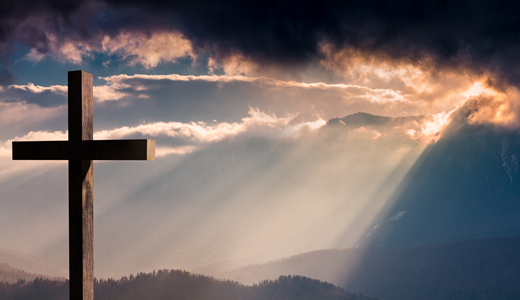For the last several weeks, my wife and I have been watching church.
Instead of pews, we sit on our couch. Instead of standing and singing ourselves, we sit and listen to the worship band play. The pastor still preaches and we still pray, but worship—intended as an active, shared experience—has taken on a sheen of passive isolation.
I’m still grateful that technology still gives us the ability to “go to church,” but I think most of us feel that there’s something diminished about the experience: something off.
And yet, on this Good Friday, I wonder whether we—in this difficult season of ours—can better understand what those early Christians may have felt. And what some, around the world, still feel.
In the decades and centuries immediately following Christ’s death and resurrection, Christianity was a difficult religion to embrace. Until Roman Emperor Constantine gave Christianity (and a bevy of other religions) legal status in A.D. 313, we Christians were pretty loathed by the rest of Roman society. We wouldn’t worship the Emperor and, more critically, we wouldn’t participate in public sacrifices—rituals that Rome believed bound its diverse Empire together. Many Romans felt that Christians were horrifically unpatriotic—perhaps feeling a little like many Americans feel when they see an NFL player take a knee during the national anthem.
Because we believed that fidelity to God trumped fidelity to state, Rome thought us Christians to be a very bad influence on society.
It didn’t help that we kept our own rituals pretty quiet from the get-go. Instead of observing our religion with public celebrations and the like, as Rome was used to, Christians worshiped behind closed doors, often in private homes. To Roman authorities, Christian worship oozed secrecy, and that led to more suspicion and lots of vile rumors, including the accusations that Christians practiced cannibalism (because we’d “eat the body” and “drink the blood” of Christ) and incest (stemming from our habit of referring to fellow Christians as “brothers” and “sisters”).
And so we were persecuted: not always systematically, but mobs were always ready to mock us, beat us up and even try to kill us. And when the government did get involved, things could get even uglier. Nero allegedly accused Christians of starting a terrible fire in Rome, and he took to capturing and killing known Christians—allegedly using their bodies as torches to light the streets. Perhaps the biggest systematic persecution took place nearly 200 years later, when emperor Valerian ordered all Christian clergy to be put to death.
No wonder Christians spent a good deal of their early history hiding.
I think about those early Christians we read about in Acts—how some were tortured and even executed for their faith. I think about Paul and his travels across the Mediterranean, being chased from one town to another, until he too was imprisoned and executed.
Today, in the season of the coronavirus, Christians are united by screens. Back then, Christians were bound by letters: Paul’s letters, Peter’s letters, the letters of others—read perhaps in small, semi-secret gatherings.
The Gospel—the “Good News”—was shared sometimes under threat of pain and death. But that didn’t make it any less good. Just because those early Christians weren’t gathered together for raucous worship-and-praise services didn’t make the core message of Easter any less profound.
Christian persecution didn’t end with Constantine, of course. Throughout our faith’s long history, Christians have been scorned, tortured and martyred for our beliefs.
One of the most profound movies on this subject is Martin Scorsese’s Silence, which chronicles the unbelievable brutality Christians experienced in Japan in the 17th century. Those persecutions were thought to have wiped out Christianity on Japan’s islands … except that, for centuries, hidden Christian symbols could be found in pottery and statuary: Figurines that looked to authorities like Buddhist idols were secretly statues of Mary. Images of Christian crosses would be hidden in the decorations of plates and bowls. Christianity endured even there—surviving until the faith was again legalized in 1873.
And we can find plenty of examples of persecution in the 21st century, too. Many believers around the world today can’t worship in public any more than those first Christians could. For them, Easter has always been a quiet hope, not a celebration filled with choirs and orchestral arrangements and dancing in the aisles.
I will miss our traditional celebration of Easter this year, no question. Instead of having the family over for Easter dinner, we’ll connect somehow through Zoom. Instead of gathering with hundreds of other believers, my wife and I will sit down and stream the worship service, quietly and a bit somberly perhaps, ever conscious of the fears and uncertainties that lurk outside our front door.
But fears and uncertainties are nothing new for us. They’re woven into the Christian tradition more firmly than ham and Easter eggs and springtime bonnets. But those very fears remind us, perhaps more powerfully, of the hope we’ve been given—the knowledge that whatever hardships we face today, our tomorrow’s joy is secured.






Recent Comments